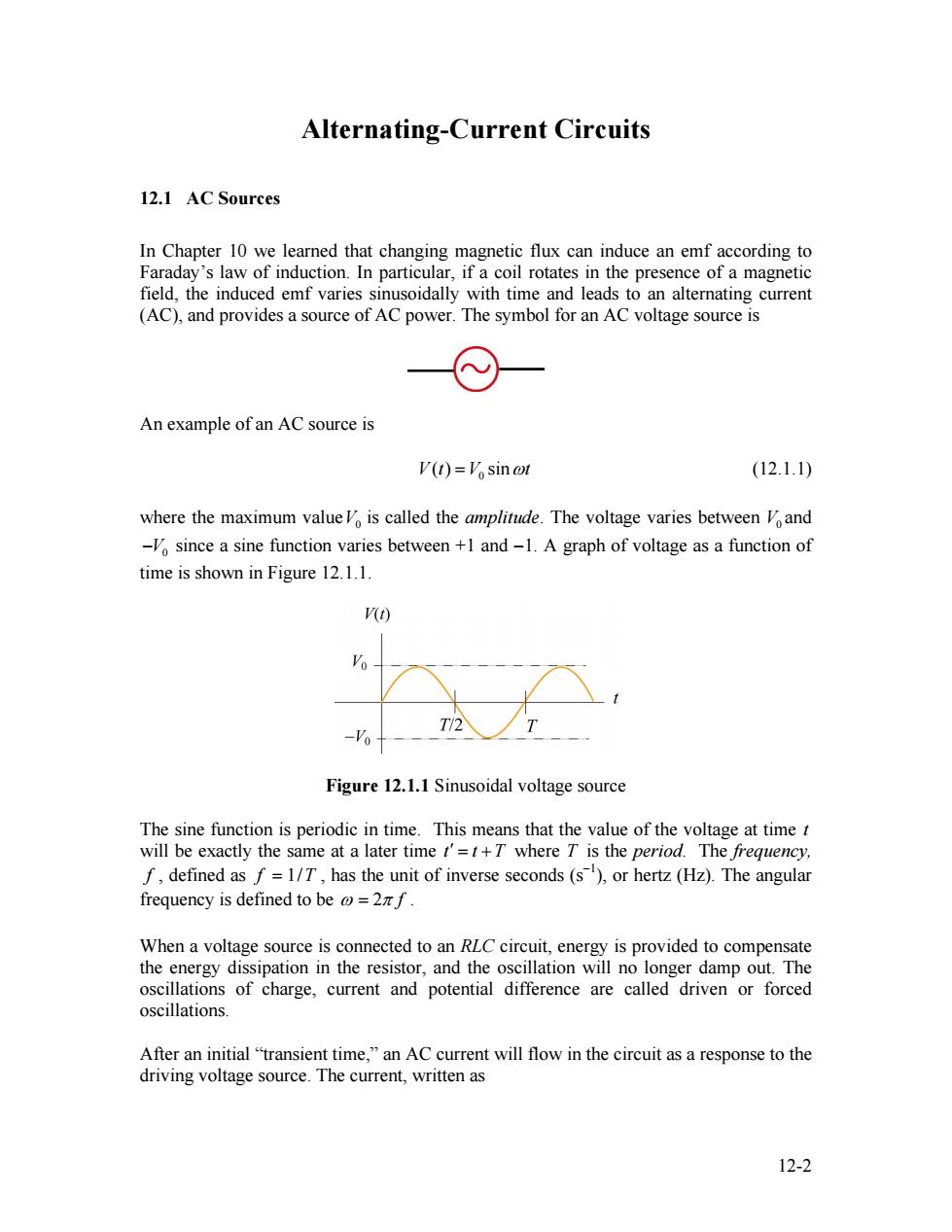正在加载图片...

Alternating-Current Circuits 12.1 AC Sources In Chapter 10 we learned that changing magnetic flux can induce an emf according to Faraday's law of induction.In particular,if a coil rotates in the presence of a magnetic field,the induced emf varies sinusoidally with time and leads to an alternating current (AC),and provides a source of AC power.The symbol for an AC voltage source is An example of an AC source is V(t)=Vo sinot (12.1.1) where the maximum valueVo is called the amplitude.The voltage varies between Vo and since a sine function varies between +1 and-1.A graph of voltage as a function of time is shown in Figure 12.1.1. (t) Vo Figure 12.1.1 Sinusoidal voltage source The sine function is periodic in time.This means that the value of the voltage at time t will be exactly the same at a later time t'=t+T where T is the period.The frequency, f,defined as f=1/T,has the unit of inverse seconds(s),or hertz(Hz).The angular frequency is defined to be @=2zf. When a voltage source is connected to an RLC circuit,energy is provided to compensate the energy dissipation in the resistor,and the oscillation will no longer damp out.The oscillations of charge,current and potential difference are called driven or forced oscillations. After an initial "transient time,"an AC current will flow in the circuit as a response to the driving voltage source.The current,written as 12-2Alternating-Current Circuits 12.1 AC Sources In Chapter 10 we learned that changing magnetic flux can induce an emf according to Faraday’s law of induction. In particular, if a coil rotates in the presence of a magnetic field, the induced emf varies sinusoidally with time and leads to an alternating current (AC), and provides a source of AC power. The symbol for an AC voltage source is An example of an AC source is 0 V t( ) =V sinωt (12.1.1) where the maximum valueV is called the amplitude. The voltage varies between and since a sine function varies between +1 and −1. A graph of voltage as a function of time is shown in Figure 12.1.1. 0 V0 −V0 Figure 12.1.1 Sinusoidal voltage source The sine function is periodic in time. This means that the value of the voltage at time t will be exactly the same at a later time t t ′ = +T where T is the period. The frequency, f , defined as f = 1/T , has the unit of inverse seconds (s−1 ), or hertz (Hz). The angular frequency is defined to be ω = 2π f . When a voltage source is connected to an RLC circuit, energy is provided to compensate the energy dissipation in the resistor, and the oscillation will no longer damp out. The oscillations of charge, current and potential difference are called driven or forced oscillations. After an initial “transient time,” an AC current will flow in the circuit as a response to the driving voltage source. The current, written as 12-2